How to make ceramics without a pottery wheel?
Creating ceramics without a pottery wheel is not only possible but also incredibly rewarding! Whether you're a complete novice or someone looking to expand your artistic repertoire, hand-building techniques offer a world of creativity and expression. Imagine molding the clay with your own hands, feeling its texture, and shaping it into something beautiful. This article will guide you through various methods, tools, and tips that will help you dive into the exciting realm of ceramics.
Hand-building is a fundamental method of creating pottery by shaping clay with your hands. It's like sculpting but with the added joy of working with a material that’s as versatile as your imagination. The primary techniques include:
- Pinch Pots: This is the simplest technique where you pinch the clay into a pot shape using your fingers. It’s perfect for beginners and allows for a lot of creativity.
- Coil Building: Here, you roll out long coils of clay and stack them to form walls. This method is great for creating larger pieces and offers a unique texture.
- Slab Construction: By rolling out flat pieces of clay, you can cut and assemble them into various shapes. This technique is excellent for making boxes or tiles.
Each of these techniques has its charm, allowing you to create unique pieces that reflect your personality and style.
Having the right tools can significantly enhance your ceramic-making experience. Think of these tools as your best friends in the journey of creation. They help you shape, refine, and finish your pieces with precision. The essential tools include:
Basic hand tools like knives, ribs, and sponges serve specific purposes in shaping and finishing clay. For instance, a rib can help smooth out surfaces, while a knife is great for cutting and detailing. These tools are crucial in achieving the desired results.
Adding texture and detail to your ceramics can elevate their aesthetic appeal. You can use various techniques to incorporate textures into your pieces, such as:
- Using stamps or found objects to press patterns into the clay.
- Carving designs into the surface.
- Experimenting with different tools to create unique finishes.
These techniques not only enhance the visual appeal but also make each piece truly one-of-a-kind.
Proper cleaning and maintenance of your ceramic tools are crucial for their longevity. Always wash your tools after use, and consider storing them in a dry place to prevent rust or damage. Regular maintenance will ensure that your tools remain in top condition, ready for your next creative endeavor.
Once you master basic hand-building, you can explore advanced techniques. This includes methods like sgraffito, where you scratch through a surface layer to reveal a different color underneath, and slip decoration, which involves applying liquid clay to create intricate designs. These advanced techniques allow for more intricate designs and personalization of your pieces.
Different types of clay can yield varying results in your ceramics. Understanding the characteristics of common clays can help you choose the right one for your projects. The most popular types include:
- Earthenware: This is a low-fire clay that is easy to work with and great for beginners.
- Stoneware: A mid to high-fire clay that is durable and ideal for functional ware.
- Porcelain: A high-fire clay known for its strength and translucence, perfect for fine art pieces.
Air-dry clay is convenient for beginners, as it doesn’t require a kiln and can be used for simple projects. On the other hand, kiln-fired clay offers durability and versatility, making it suitable for functional pottery. Choosing between these options depends on your project goals and available resources.
Selecting the appropriate clay type is crucial for achieving desired results. Factors to consider when choosing clay for specific projects include:
- The intended use of the piece (decorative vs. functional).
- The desired finish and texture.
- Your skill level and available tools.
Finishing touches can enhance the beauty of your ceramics. Techniques such as glazing, painting, and burnishing can transform your pieces from simple to stunning. Glazing not only adds color but also protects your ceramics, making it an essential step in the pottery process.
The glazing process involves applying a glass-like coating to your pottery, which can enhance its durability and aesthetic appeal. It's like giving your piece a shiny new coat that brings out its colors and designs.
Besides glazing, various finishing methods like burnishing and underglazing can also be employed. Burnishing gives a smooth, polished surface, while underglazing allows for detailed painting before the final glaze is applied. Each method has its unique charm and can be chosen based on the desired outcome of your piece.
Starting your ceramic journey can be daunting, but with a few practical tips, you can navigate the hand-building process with confidence. Remember, the key is to enjoy the process and not to rush it. Take your time, experiment, and let your creativity flow!
Identifying and avoiding common mistakes can improve your ceramic-making skills. Some frequent pitfalls include:
- Not wedging the clay properly, which can lead to air bubbles.
- Overworking the clay, causing it to dry out.
- Skipping the drying time, which can lead to cracks during firing.
Numerous resources are available for those wishing to deepen their ceramic knowledge. Consider exploring books, online courses, and community workshops. Engaging with fellow ceramicists can provide valuable insights and inspiration.
Q1: Can I use regular clay for ceramics?
A: Regular clay is not suitable for ceramics as it may not withstand firing. Always use clay specifically designed for pottery.
Q2: Do I need a kiln for hand-built ceramics?
A: A kiln is necessary for firing most clays, but air-dry clay can be used without one.
Q3: How long does it take for clay to dry before firing?
A: It typically takes 24-48 hours for clay to dry, but this can vary based on thickness and humidity.

Introduction to Hand-Building Techniques
Hand-building is not just a method; it’s a creative adventure that allows you to shape clay using nothing but your hands and a little imagination. If you’ve ever felt the urge to mold something beautiful with your own two hands, then hand-building ceramics is the perfect way to unleash your creativity. Unlike wheel throwing, which can be intimidating for beginners, hand-building offers a more accessible and personal approach to pottery. You get to feel the clay, manipulate it, and transform it into something uniquely yours.
There are several fundamental techniques in hand-building, each with its own charm and purpose. The most popular methods include:
- Pinch Pots: This technique involves pinching the clay into shape, making it perfect for beginners. It’s as simple as taking a ball of clay and using your fingers to create a bowl or a small vessel.
- Coil Building: This method allows for the construction of larger and more complex forms. You roll out long coils of clay and stack them to build up the walls of your creation. It’s like building with clay ropes!
- Slab Construction: Here, you roll out flat pieces of clay (slabs) and join them together to form shapes. This technique is great for creating boxes, tiles, or any geometric forms.
Each of these techniques has its own set of advantages and can be combined for even more creative possibilities. For instance, you might start with a pinch pot and then use coil building to add decorative elements. The beauty of hand-building lies in its flexibility; there are no strict rules, and you can let your imagination run wild.
Moreover, hand-building is not just about the final product; it’s a meditative process. As you work the clay, you may find yourself lost in thought, focusing solely on the texture and form beneath your fingers. It’s a wonderful way to unwind and express yourself artistically.
As you dive into the world of hand-building, remember that practice makes perfect. Don’t be afraid to experiment with different techniques and styles. Embrace the imperfections that come with handmade items—they are what make your creations truly unique. So, grab some clay and let your hands do the talking!

Essential Tools for Clay Sculpting
When it comes to creating ceramics without a pottery wheel, having the right tools at your disposal can make all the difference. Imagine trying to paint a masterpiece without a brush; it would be a challenge, right? Similarly, the tools you choose for clay sculpting can either enhance your creativity or hinder your progress. In this section, we’ll dive into the essential tools that will help you shape, mold, and finish your clay creations with ease.
First and foremost, let’s talk about the basic hand tools that every aspiring ceramic artist should have. These tools are like the paintbrushes of the clay world, and they serve specific purposes that can significantly impact your work. For instance, knives are indispensable for cutting and trimming clay, allowing you to achieve clean edges and precise shapes. Meanwhile, ribs come in various materials like wood, plastic, or metal, and they are perfect for smoothing surfaces and shaping your pieces. Lastly, sponges are essential for adding moisture to your clay and refining details, ensuring that your work looks polished and professional.
But wait, there’s more! Beyond the basic tools, you might want to explore some additional equipment that can elevate your ceramic-making experience. Tools like loop tools and needle tools are fantastic for adding intricate details and textures to your work. Loop tools can help you carve out shapes or hollow out forms, while needle tools are perfect for fine lines and delicate work. Consider investing in a clay extruder as well, which allows you to create consistent shapes and designs effortlessly, giving your pieces a unique flair.
Creating texture and detail is an exciting part of the ceramic process, and having the right tools can help you achieve stunning results. For example, you can use stamps or texturing tools to imprint designs onto your clay, transforming a simple piece into a work of art. Additionally, don’t underestimate the power of household items; things like forks, buttons, or even leaves can be used to create unique textures and patterns, adding a personal touch to your creations.
Now, let’s not forget about the maintenance of your tools. Proper cleaning and care are vital to ensuring that your tools last for many projects to come. After each use, rinse your tools with water to remove any clay residue. For stubborn bits, a gentle scrub with a sponge or brush will do the trick. Storing your tools in a dry place and keeping them organized will also help you find what you need when inspiration strikes!
In summary, the essential tools for clay sculpting range from basic hand tools to specialized equipment that can enhance your creativity. By investing in the right tools and maintaining them properly, you’ll set yourself up for success on your ceramic journey. So, gather your tools, unleash your imagination, and get ready to create stunning pieces that showcase your unique style!
Q: Do I need a lot of tools to start sculpting with clay?
A: Not at all! You can start with just a few basic tools like a knife, rib, and sponge. As you progress, you can add more specialized tools based on your needs and preferences.
Q: Can I use household items as tools for clay sculpting?
A: Absolutely! Many household items can serve as effective tools for texturing and shaping clay, such as forks, spoons, and even old credit cards.
Q: How do I clean my clay tools properly?
A: Rinse your tools with water immediately after use to remove clay residue. For tougher bits, use a sponge or brush. Make sure to store them in a dry place to prevent damage.

Basic Hand Tools
When you're diving into the world of ceramics, having the right tools can make all the difference between a frustrating experience and a fulfilling one. Think of your hand tools as your best friends in this creative journey; they help you mold, shape, and refine your clay into beautiful works of art. Among the essential basic hand tools, you’ll find knives, ribs, and sponges, each serving a unique purpose that enhances your crafting process.
Knives are indispensable for cutting, trimming, and carving your clay. They come in various shapes and sizes, allowing you to execute different techniques. A sharp knife can help you achieve clean edges and intricate details, which are crucial for any ceramic piece. Imagine trying to carve a delicate design without a proper knife—it's like trying to paint a masterpiece with a blunt brush!
Next up, we have ribs. These tools are usually made from wood, plastic, or metal and are designed to smooth and shape your clay. They come in different forms, including curved and flat ribs, allowing for versatility in your work. Using a rib can feel like gliding a smooth stone over a surface, transforming rough clay into sleek, polished pottery. Whether you’re creating a bowl or a sculpture, ribs help ensure your pieces have that professional finish.
Finally, sponges are essential for keeping your clay moist and workable. They’re perfect for smoothing surfaces and adding subtle textures. Think of a sponge as the gentle touch that brings your creation to life. You can use it to refine edges or to blend clay seams, ensuring that your piece looks seamless and polished. Without a sponge, your clay might dry out too quickly, leading to cracks and imperfections.
To summarize, these basic hand tools—knives, ribs, and sponges—are the backbone of your ceramic journey. They allow you to manipulate clay with precision and creativity. Treat them well, and they will serve you faithfully throughout your artistic endeavors. Remember, the right tools can elevate your work from amateur to artisan, so invest in quality tools and learn how to use them effectively.
1. What tools do I need to start making ceramics?
To start making ceramics, you will need basic hand tools such as knives, ribs, and sponges. Additionally, consider having a rolling pin and some modeling tools for more detailed work.
2. Can I use regular kitchen knives for cutting clay?
While you can use regular kitchen knives, it's recommended to use tools specifically designed for ceramics. These tools are sharper and more suitable for the precision required in pottery making.
3. How do I clean my ceramic tools?
Cleaning your ceramic tools is crucial for their longevity. Rinse them with water immediately after use to remove clay residue, and dry them thoroughly to prevent rusting, especially for metal tools.
4. Where can I find these hand tools?
You can find ceramic hand tools at local craft stores, art supply shops, or online retailers that specialize in pottery supplies.

Creating Texture and Detail
When it comes to ceramics, texture and detail are what truly bring your pieces to life. Imagine running your fingers over a beautifully crafted ceramic surface, feeling the intricate patterns and designs that tell a story. Creating texture in your ceramics is not just about aesthetics; it's about adding depth and character to your work. There are several techniques you can use to achieve this, and they can be as simple or complex as you desire.
One of the most popular methods for adding texture is through imprinting. This can be done using everyday objects like leaves, fabric, or even stamps. By pressing these items into the clay, you can create unique patterns that are both visually striking and tactile. For instance, a leaf can leave behind a delicate vein pattern, while fabric can impart a soft, woven texture. The beauty of this technique lies in its accessibility; you don’t need fancy tools to get started!
Another effective method is carving. Once your clay has reached a leather-hard state, you can use various tools to carve designs into the surface. This can be as simple as drawing lines or as intricate as creating detailed scenes. The key here is to experiment with different tools to see what effects you can achieve. Knives, loop tools, and even dental tools can create a variety of textures. Just remember to work gently to avoid cracking the clay.
In addition to these methods, you can also explore slip decoration. Slip is a liquid mixture of clay and water that can be applied to your pieces to add color and texture. By layering different slips, you can create stunning visual effects that enhance the overall design. You can even use brushes or sponges to apply the slip, allowing for a range of styles from subtle washes to bold, graphic designs.
For those looking to push their creativity even further, consider using glazing techniques that enhance texture. Certain glazes can react differently based on the texture of the underlying clay. For example, a rough surface might catch more glaze, resulting in a more vibrant finish, while a smooth surface could yield a sleek, glossy look. Experimenting with different glazes on textured surfaces can lead to unexpected and delightful results.
Lastly, don’t underestimate the power of layering. Combining different techniques can lead to unique outcomes. For instance, you might start with an imprinted base, add carved details, and finish with a colorful slip. Each layer adds complexity, making your piece a true work of art. The journey of creating texture and detail in ceramics is all about exploration and experimentation, so don’t be afraid to try new things!
In conclusion, creating texture and detail in your ceramics is an exciting way to express your artistic vision. Whether you choose to imprint, carve, apply slip, or layer techniques, the possibilities are endless. So grab your tools, unleash your creativity, and watch as your ceramics transform into stunning pieces of art!
- What materials can I use for imprinting textures? You can use a variety of materials, including leaves, fabrics, stamps, and even textured household items like sponges or lace.
- How do I know when my clay is leather-hard? Leather-hard clay is firm yet still slightly pliable. You can press your fingernail into it without leaving a deep impression.
- Can I mix different types of clay for texturing? Yes, mixing different clay types can create interesting textures and colors, but ensure they have similar firing temperatures.
- What kind of tools do I need for carving? Basic carving tools include loop tools, knives, and dental tools. You can also use household items like toothpicks for finer details.
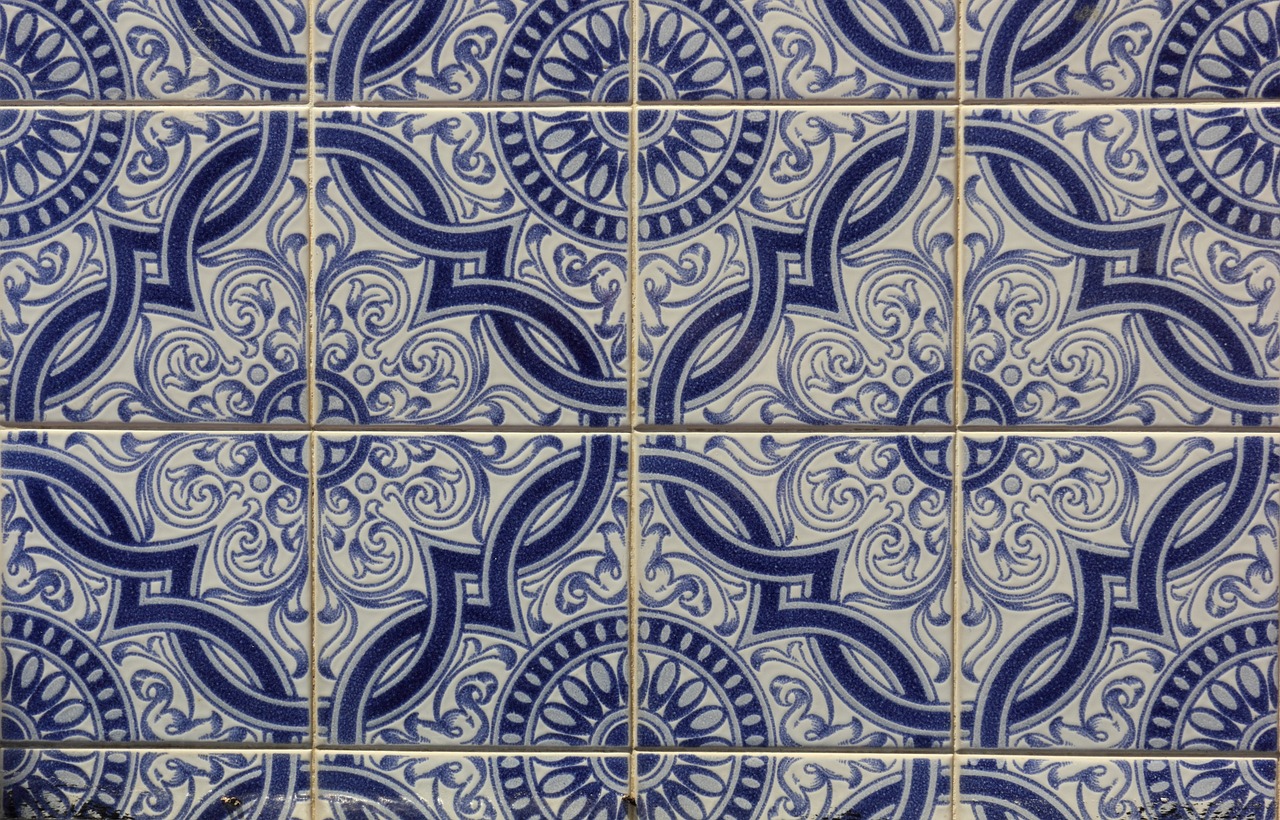
Cleaning and Maintenance of Tools
Keeping your ceramic tools in top-notch condition is not just a chore; it's a vital part of your creative process. Imagine trying to sculpt a delicate piece of pottery with a dirty, worn-out tool—frustrating, right? Regular cleaning and maintenance ensure that your tools perform optimally, allowing you to focus on what truly matters: your artistry.
After each session, it's essential to clean your tools thoroughly. For basic hand tools like knives and ribs, a simple rinse with water will often do the trick. However, make sure to remove any clay residue that might cling stubbornly to the edges. A soft sponge or cloth can be your best friend here. Just think of it as giving your tools a refreshing bath after a long day of work!
For tools that have intricate designs or textures, such as stamps or rollers, a more careful approach is necessary. You might want to soak them briefly in warm water to loosen up any stuck clay before gently scrubbing with a soft brush. This helps maintain their texture and ensures they remain effective for future projects. Remember, a little care goes a long way in prolonging the life of your tools.
Now, let’s talk about maintenance. Just like you wouldn't drive a car without regular oil checks, your ceramic tools also need some TLC. Periodically inspect your tools for any signs of wear and tear. If you notice any cracks or chips, it might be time to replace them. Investing in high-quality tools can save you time and money in the long run, as they tend to be more durable.
Here’s a quick table summarizing the cleaning and maintenance routine:
| Tool Type | Cleaning Method | Maintenance Tips |
|---|---|---|
| Knives & Ribs | Rinse with water and scrub with a sponge | Check for dullness; sharpen if necessary |
| Stamps & Rollers | Soak in warm water, scrub with a soft brush | Inspect for cracks; replace if damaged |
| Sponges | Rinse thoroughly, squeeze out excess water | Replace when they start to break down |
Lastly, don't forget the importance of storing your tools properly. A dedicated toolbox or a simple drawer can keep your tools organized and protected from dust and damage. Think of your tools as your trusted companions on your ceramic journey; they deserve a cozy home too!
Q: How often should I clean my tools?
A: It's best to clean your tools after every use to prevent clay buildup and maintain their effectiveness.
Q: Can I use soap to clean my tools?
A: While it's generally fine to use a mild soap, avoid harsh chemicals that could damage your tools or affect your clay.
Q: What should I do if my tools are damaged?
A: Inspect your tools regularly. If you find cracks or significant wear, it's advisable to replace them to ensure the quality of your work.
Q: How can I prolong the life of my ceramic tools?
A: Regular cleaning, proper maintenance, and safe storage are key to extending the lifespan of your tools.

Advanced Hand-Building Techniques
Once you've got the basics of hand-building down, it's time to take your skills to the next level with some advanced techniques. These methods not only allow for greater creativity but also enable you to create intricate designs that can truly showcase your artistic flair. Two popular advanced techniques are sgraffito and slip decoration. Let's dive into these methods and see how they can transform your ceramic pieces.
Sgraffito is a technique that involves scratching through a surface to reveal a lower layer of contrasting color. This method is particularly effective when you're working with colored slips or underglazes. To achieve this, you first apply a layer of slip to your piece and allow it to dry to a leather-hard state. Then, using a sharp tool, you can carve designs into the surface, exposing the clay underneath. The beauty of sgraffito lies in its versatility; you can create everything from simple patterns to intricate images, making it a favorite among artists who love to add a personal touch to their work.
On the other hand, slip decoration involves applying liquid clay (slip) to your piece to create patterns, textures, or even images. This technique can be as simple or as complex as you desire. For instance, you might start with a plain clay body and add colored slips in various hues to create a vibrant design. You can also use tools like brushes or sponges to apply the slip, allowing for a range of effects from delicate to bold. The key is to experiment with different application methods to see what resonates with your style.
In addition to these techniques, you might also want to explore building forms with multiple pieces. This involves creating separate components that are later assembled into a final piece. For example, you could make a vase by constructing the body, neck, and rim as individual parts before joining them together. This method not only adds complexity to your work but also allows for greater freedom in design. Just remember to score and slip the edges where you join pieces to ensure a strong bond.
Finally, don’t shy away from incorporating mixed media into your ceramics. This can include adding non-clay materials like glass, metal, or even fabric to your pieces. The fusion of different materials can create stunning visual contrasts and textures, pushing the boundaries of traditional ceramics. Just be mindful of the firing temperatures of different materials to ensure they can withstand the kiln process.
In conclusion, mastering these advanced hand-building techniques can significantly enhance your ceramic creations. Whether you choose to explore sgraffito, slip decoration, or mixed media, the possibilities are endless. As you continue to practice and experiment, you'll find your unique voice in the world of ceramics, leading to pieces that are not just functional but also works of art.
- What is sgraffito? Sgraffito is a ceramic technique where you scratch through a surface layer to reveal a contrasting color underneath.
- Can I use any type of slip for decoration? Yes, you can use colored slips or underglazes, but ensure they are compatible with your clay body.
- What is the best way to join multiple clay pieces? Always score and slip the edges before joining to create a strong bond.
- Is it okay to mix materials in ceramics? Yes, mixing materials can create unique effects, but make sure they can withstand the same firing temperatures.

Understanding Clay Types
When it comes to creating ceramics, understanding the different types of clay is crucial for achieving the best results. Each type of clay has its unique properties, which can significantly influence the outcome of your pottery. Whether you're a novice or an experienced potter, knowing which clay to use can make all the difference. Let's dive into the most common types of clay and their characteristics, so you can make informed choices for your projects.
First off, there are two primary categories of clay: earthenware and stoneware. Earthenware is typically soft and porous, making it great for beginners. It fires at lower temperatures, around 1,830°F (1,000°C), which makes it easier to work with. However, because of its porous nature, earthenware is often used for decorative pieces rather than functional ones unless it’s glazed properly. On the other hand, stoneware is more durable and can withstand higher temperatures, around 2,192°F (1,200°C). This makes it suitable for functional pottery like dishes and mugs that can endure daily use.
Additionally, there’s also porcelain, which is known for its fine texture and translucent quality. Porcelain requires a higher firing temperature, usually between 2,192°F and 2,372°F (1,200°C to 1,300°C), and is often used for more intricate and delicate pieces. Its strength and beauty make it a favorite among artists and collectors alike. If you’re looking to create elegant, high-end ceramics, porcelain might just be the right choice for you.
Here’s a quick comparison table to help you understand the differences:
| Type of Clay | Firing Temperature | Characteristics | Best For |
|---|---|---|---|
| Earthenware | 1,830°F (1,000°C) | Soft, porous, easy to work with | Decorative pieces, flower pots |
| Stoneware | 2,192°F (1,200°C) | Durable, non-porous, versatile | Functional pottery, dinnerware |
| Porcelain | 2,192°F - 2,372°F (1,200°C - 1,300°C) | Fine, translucent, strong | High-end ceramics, intricate designs |
When selecting clay for your project, consider the end use of your piece. If you’re making something that will hold water or be used for food, stoneware or porcelain would be the best options. If you’re just starting out and want to practice, earthenware is a forgiving choice. Remember, the clay you choose can either make or break your project, so take your time to understand these materials.
In addition to these main types, there are also specialized clays like paper clay, which incorporates paper fibers for added strength and flexibility, and low-fire clay, which is perfect for decorative purposes due to its vibrant colors. Each type has its unique set of qualities that can enhance your creative process.
As you embark on your ceramic journey, keep in mind that experimentation is key. Don’t hesitate to try different types of clay to discover what works best for your style and projects. With a bit of practice and exploration, you'll find the perfect clay that resonates with your artistic vision.
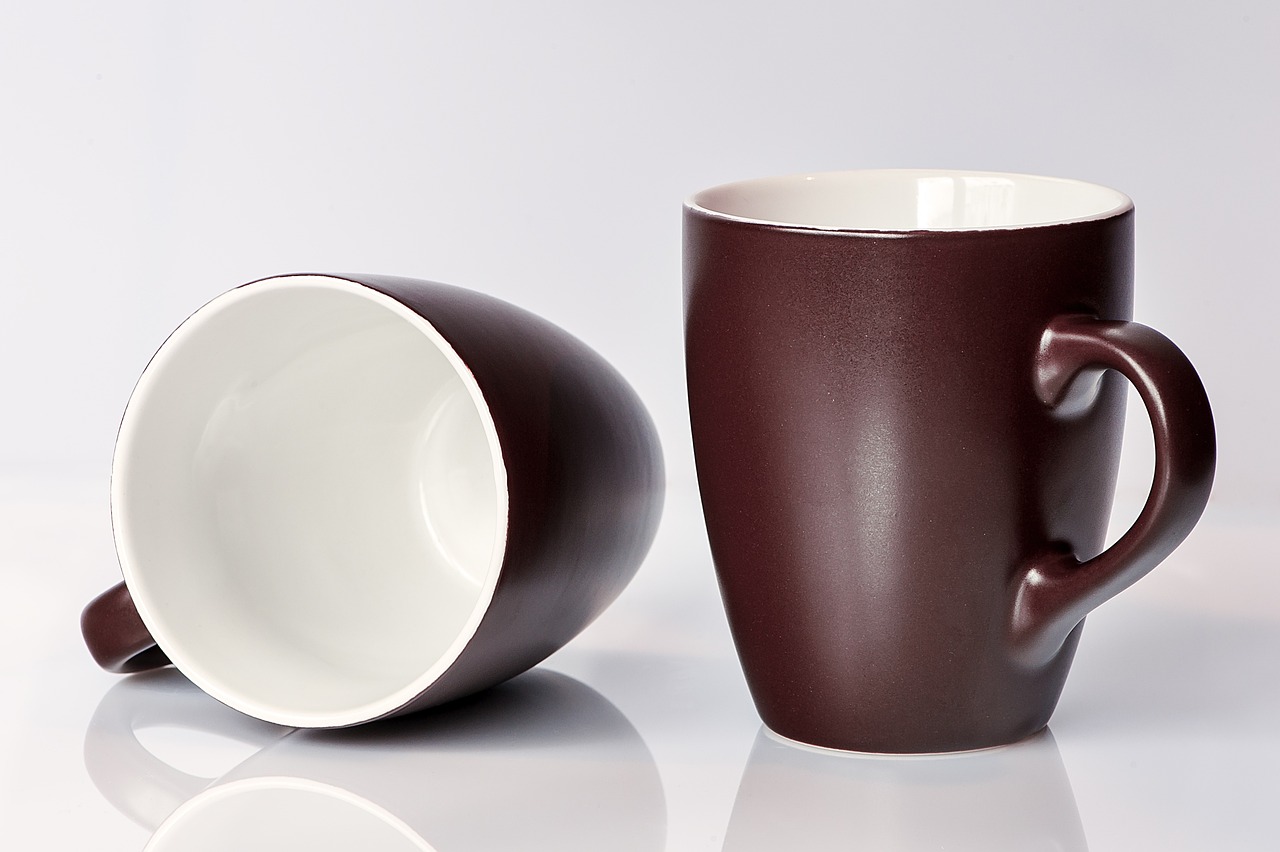
Air-Dry vs. Kiln-Fired Clay
When it comes to creating ceramics, the choice of clay can significantly impact the final product. Two popular types of clay are air-dry clay and kiln-fired clay. Each has its own unique characteristics, advantages, and disadvantages that cater to different needs and skill levels. Understanding these differences is crucial for any aspiring ceramic artist.
Air-dry clay is often favored by beginners due to its convenience. As the name suggests, this type of clay dries naturally in the air, eliminating the need for a kiln. This makes it an excellent choice for those who want to experiment with ceramics without investing in expensive equipment. The drying process can take anywhere from a few hours to a couple of days, depending on the thickness of the piece and the humidity in the environment. However, while air-dry clay is easy to use, it typically lacks the durability and water resistance of kiln-fired clay. Once dry, it can be fragile and may not withstand heavy use.
On the other hand, kiln-fired clay is a game changer for those looking to create more durable and versatile pieces. This type of clay is fired in a kiln at high temperatures, which transforms it into a hard, ceramic material. This firing process not only enhances the strength of the clay but also allows for a variety of glazing options, making it perfect for functional pottery like dishes and mugs. However, the downside is that kiln-fired clay requires access to a kiln, which can be a significant investment for hobbyists. Additionally, the firing process can be time-consuming, as pieces often need to go through multiple firings for glazing and finishing.
To help you visualize the differences between the two types of clay, here’s a quick comparison:
| Feature | Air-Dry Clay | Kiln-Fired Clay |
|---|---|---|
| Drying Method | Air-dried | Fired in a kiln |
| Durability | Less durable, can be fragile | Highly durable, suitable for functional items |
| Water Resistance | Not water-resistant | Water-resistant when glazed |
| Accessibility | Easy to use, no special equipment needed | Requires a kiln and more investment |
| Best For | Beginner projects, crafts | Functional pottery, intricate designs |
In conclusion, the choice between air-dry and kiln-fired clay ultimately depends on your project goals and available resources. If you’re just starting out and want to explore your creativity without a hefty investment, air-dry clay is a fantastic option. However, if you’re aiming for durability and functionality in your pieces, investing in kiln-fired clay and a kiln may be worth it in the long run. Each type of clay offers unique possibilities, so consider experimenting with both to discover what works best for you!
- Can I paint air-dry clay? Yes, you can use acrylic paints or markers once the clay is completely dry.
- How long does kiln-fired clay take to dry before firing? It usually takes about 24 hours, but this can vary based on the thickness of the piece.
- Is air-dry clay suitable for outdoor use? Not typically, as it can degrade when exposed to moisture and weather conditions.
- What types of glazes can I use on kiln-fired clay? You can use a wide range of glazes, including glossy, matte, and underglazes, to achieve different finishes.
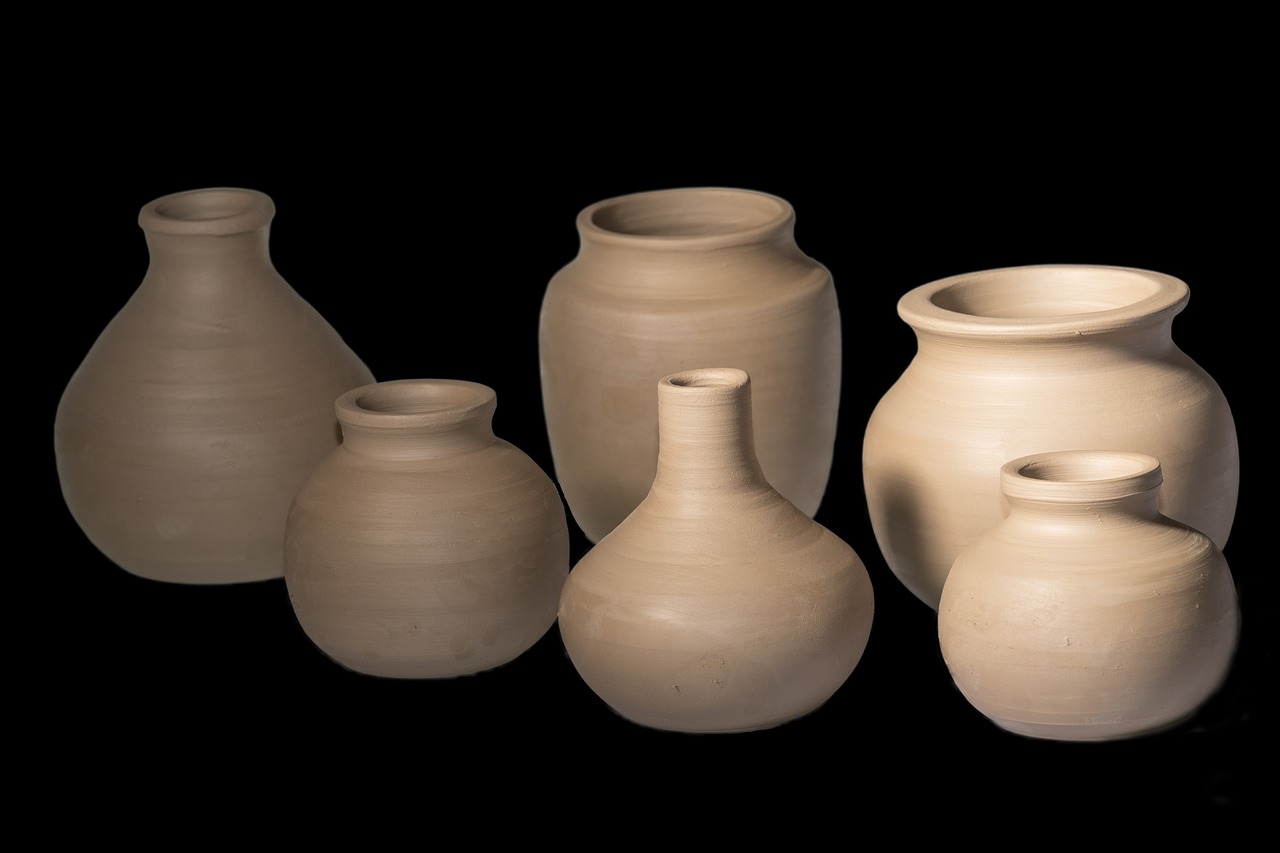
Choosing the Right Clay for Your Project
When it comes to creating ceramics, one of the most important decisions you'll make is selecting the right type of clay for your project. The choice of clay can dramatically influence not just the appearance of your final piece but also its durability and functionality. Different clays come with unique properties, and understanding these can help you make an informed decision that aligns with your artistic vision.
First, consider the purpose of your ceramic piece. Are you crafting functional ware like bowls or mugs, or are you leaning towards decorative art? For functional pieces, you'll want a clay that can withstand daily use and is safe for food. Stoneware is a popular choice for such items because it is durable and non-porous once fired, making it ideal for tableware.
On the other hand, if you're focused on art pieces, you might want to explore earthenware or porcelain. Earthenware is easier to work with and is great for beginners, but it tends to be more porous and less durable. Porcelain, while more challenging to manipulate, offers a beautiful, smooth finish and is incredibly strong when fired properly. Understanding these distinctions is crucial in selecting the right clay.
Another factor to consider is the firing temperature. Clays are categorized into low-fire and high-fire clays, each requiring different kiln temperatures. Low-fire clays, such as earthenware, typically fire at temperatures between 1820°F to 2100°F, while high-fire clays, like stoneware and porcelain, can require temperatures of 2100°F to 2400°F. If you have access to a kiln, be sure to check its firing capabilities to ensure compatibility with your chosen clay.
Lastly, don’t forget about the texture and color of the clay. Some projects may call for a specific aesthetic, and the natural color of the clay can play a significant role in the overall look of your piece. For instance, if you're planning to glaze your work, you might want to start with a clay that has a neutral color to allow the glaze to shine through. Alternatively, if you're looking for a rustic feel, a red or brown earthenware might be just what you need.
To summarize, here are a few key points to consider when choosing clay:
- Purpose: Functional vs. decorative
- Firing temperature: Low-fire vs. high-fire
- Texture and color: Aesthetic preferences
By keeping these factors in mind, you can select the right clay that not only meets your project’s needs but also enhances your creative expression. Remember, the journey of creating ceramics is as much about exploration and learning as it is about the final product. So, don’t hesitate to experiment with different types of clay to find what resonates with your artistic style!
Q: What is the best clay for beginners?
A: Earthenware is often recommended for beginners due to its workability and lower firing temperatures.
Q: Can I use air-dry clay for functional items?
A: Air-dry clay is not recommended for functional items as it is not waterproof and can degrade when exposed to moisture.
Q: How do I know which clay is right for glazing?
A: Look for clays that are specifically labeled as suitable for glazing; these typically have a smooth texture and a neutral color.
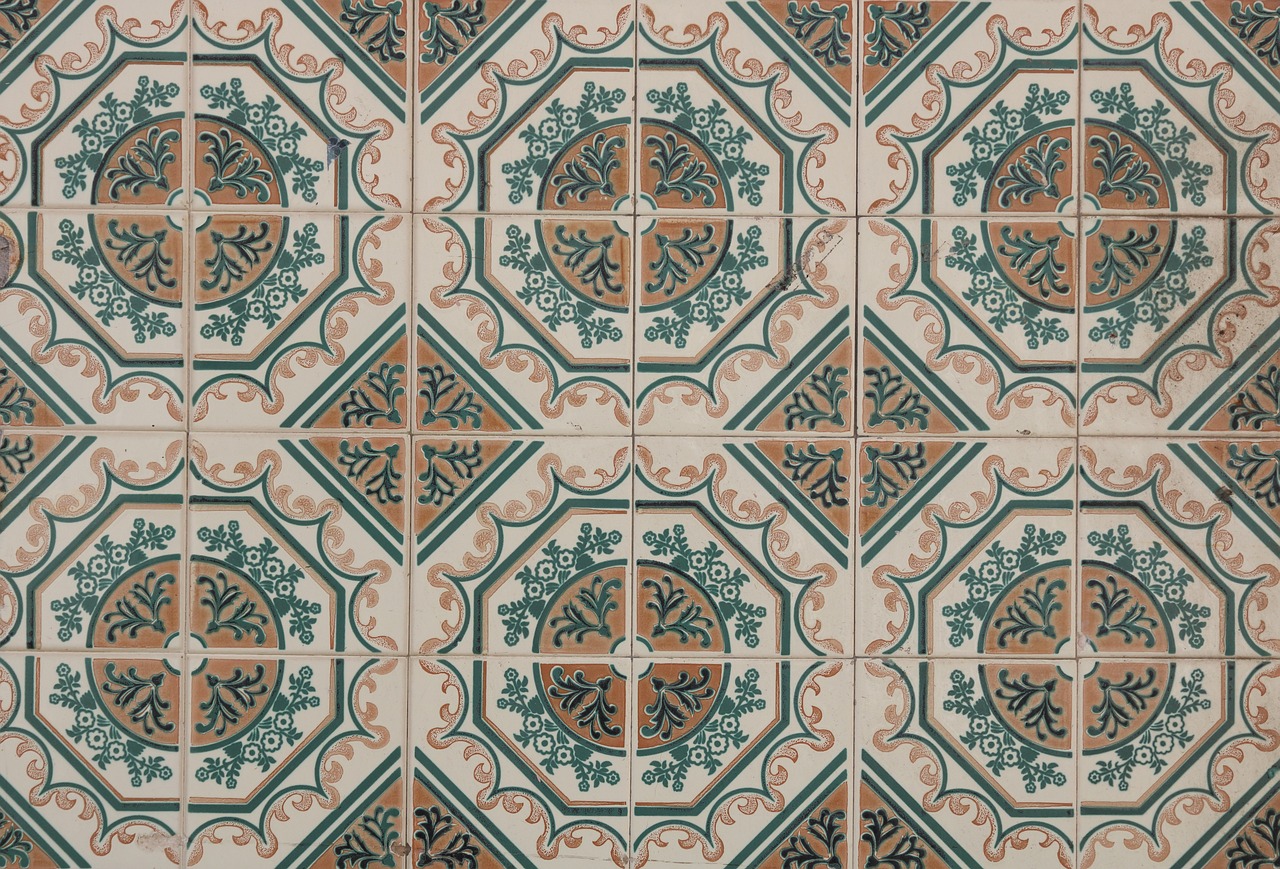
Finishing Techniques for Ceramics
Finishing techniques are the final touches that can transform your ceramics from simple clay forms into stunning works of art. Whether you’re making functional pieces like bowls and mugs or decorative items, the finishing stage is crucial in defining the overall look and feel of your creations. One of the most popular methods is glazing, which not only adds color but also provides a protective layer to your ceramics, making them more durable and functional.
Glazing can be a magical process, as it allows you to experiment with various colors and finishes. You can choose from glossy, matte, or even textured glazes, each offering a unique aesthetic. The glazing process involves applying a liquid glaze to the surface of your pottery before firing it in a kiln. This firing process causes the glaze to melt and fuse with the clay, creating a beautiful, glass-like surface. It’s important to choose the right glaze for your specific clay type, as some glazes may react differently when fired with different clay bodies.
Aside from glazing, there are alternative finishing methods that can add character to your ceramics. For instance, burnishing is a technique where you polish the surface of the clay with a smooth tool or your fingers before it dries completely. This process creates a shiny surface without the need for glaze, giving your piece a natural, earthy feel. Another technique is underglazing, where you apply color to the clay body before glazing it. This allows for intricate designs and patterns to show through the clear glaze, enhancing the overall visual appeal.
Here’s a quick comparison of some popular finishing techniques:
| Technique | Description | Best For |
|---|---|---|
| Glazing | Applying a liquid glaze that melts during firing for color and protection. | Functional and decorative pieces. |
| Burnishing | Polishing the surface to create a shiny finish without glaze. | Natural, rustic aesthetics. |
| Underglazing | Applying color before glazing for intricate designs. | Detailed artwork and patterns. |
Remember, the finishing technique you choose can greatly influence the final outcome of your ceramics. Don’t be afraid to experiment! Mixing and matching different techniques can lead to stunning results. For instance, you might try burnishing a piece before applying underglaze for a unique textural effect, or layer different glazes for a rich, complex look.
As you dive deeper into the world of ceramics, you'll discover that finishing techniques are not just about aesthetics; they also play a role in the functionality of your pieces. A well-glazed mug, for example, is not only beautiful but also safe for food use, while a burnished piece may be more suited for decorative purposes. Understanding the properties of different finishes will empower you to create ceramics that are not only visually appealing but also practical for everyday use.
- What is the best glaze for beginners? Many beginners start with a clear or transparent glaze, as it allows the natural beauty of the clay to shine through while providing a protective layer.
- Can I use acrylic paint on ceramics? While acrylic paint can be used for decorative purposes, it is not recommended for functional pieces that will be washed or used for food.
- How can I achieve a matte finish? To achieve a matte finish, look for specific matte glazes or consider burnishing your piece before firing.

Importance of Glazing
Glazing is an essential step in the ceramic-making process that not only enhances the visual appeal of your pottery but also adds a layer of protection. Imagine spending hours crafting a beautiful piece, only to have it marred by scratches or stains. This is where glazing comes into play! It acts as a shield, preserving your hard work and ensuring that your creations last for years to come.
When you apply glaze, you're not just adding color; you're transforming the surface of your ceramics. The right glaze can bring out the textures and details you've painstakingly created, highlighting every curve and contour. For instance, a glossy glaze can make your work shimmer under the light, while a matte finish can give it a more earthy, organic feel. Each choice you make in glazing can dramatically alter the final look of your piece.
Additionally, glazing serves functional purposes. For functional ware, such as plates and mugs, a good glaze is crucial. It makes the surface non-porous, which means it won't absorb liquids or food particles, making it easier to clean and more hygienic. This is particularly important for items that will be used regularly. Without proper glazing, your ceramics could harbor bacteria, which is definitely not something you want in your kitchen!
Moreover, glazing can also influence the firing process. Different types of glazes react differently in the kiln, which can affect the final outcome of your piece. Some glazes may change color or texture during firing, adding an element of surprise to your work. This unpredictability can be exciting for artists who enjoy experimenting with various glazing techniques.
In summary, glazing is not just a decorative finish; it's a vital component of pottery that protects, enhances, and even transforms your creations. Whether you're a beginner or a seasoned potter, understanding the importance of glazing can elevate your ceramic work to new heights. So, the next time you find yourself at the glazing stage, remember that it's your chance to add that final touch of magic to your masterpiece!
- What is the best type of glaze for beginners? - For beginners, it's often recommended to start with a clear or transparent glaze, as it allows you to see the clay body underneath while still providing protection.
- Can I glaze ceramics without a kiln? - Yes! There are air-dry glazes available that can be used without firing, but they may not be as durable as kiln-fired glazes.
- How do I know if my glaze is food safe? - Always check the label or product specifications for food safety information. Many commercial glazes are tested for food safety, but it's essential to verify.
- Can I mix different glazes? - Yes, mixing glazes can lead to unique colors and effects, but be sure to test your mixtures on small pieces before applying them to larger works.
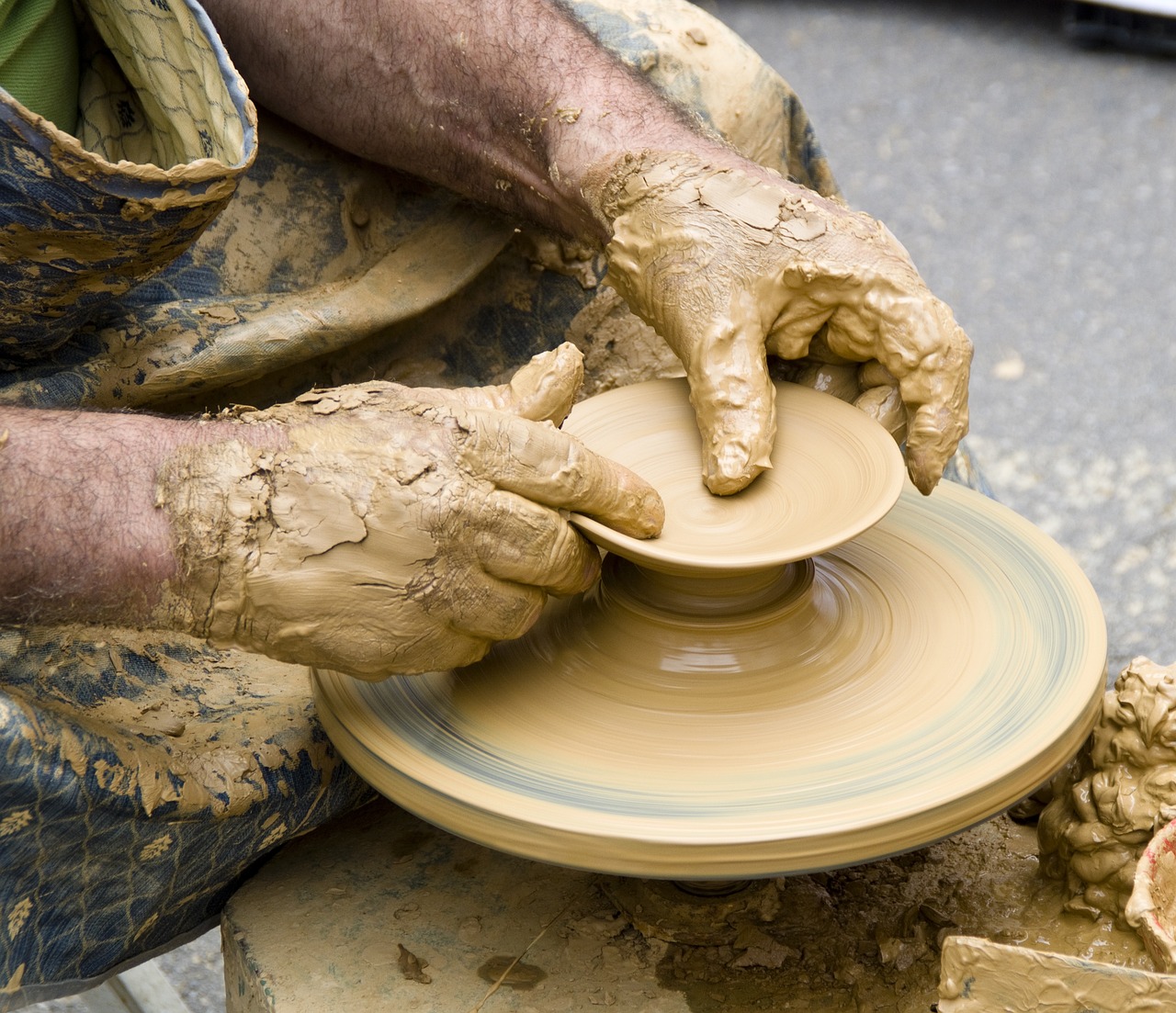
Alternative Finishing Methods
When it comes to finishing your ceramics, glazing might be the first thing that comes to mind, but there are several alternative methods that can add unique touches to your pieces. These methods not only enhance the aesthetic appeal but also allow for a greater range of creativity in your projects. Let’s dive into some popular alternatives that can elevate your hand-built ceramics.
One of the most intriguing methods is burnishing. This technique involves rubbing the surface of the clay with a smooth tool, such as a stone or a metal spoon, before the piece is fired. The friction creates a polished, shiny surface that can be incredibly beautiful. Imagine holding a piece that reflects light with a soft sheen, almost like a piece of marble! It's a simple technique but yields stunning results, especially on earthenware.
Another fascinating option is underglazing. This method allows you to apply color to your ceramics before the final glaze is added. Underglazes come in a variety of colors and can be painted, sponged, or even stamped onto the clay. Once you apply the glaze over the top, it creates a depth of color that can be quite striking. It's like painting a masterpiece, but on a three-dimensional canvas!
Moreover, you can explore sgraffito, which is an ancient technique that involves scratching through a layer of slip (liquid clay) to reveal the clay body underneath. This method is perfect for creating intricate designs and patterns. Imagine carving delicate flowers or geometric shapes that tell a story on your ceramic piece! The contrast between the slip color and the clay body can create a dramatic effect that is hard to achieve with other methods.
For those looking to experiment with textures, consider texturing your ceramics before firing. This can be done using various tools or even natural materials like leaves and fabrics to create imprints. The result? A tactile experience that invites touch and adds an organic feel to your work. Think of it as giving your ceramics a personality, making them not just objects but conversation starters!
Finally, don't overlook the technique of stamping. You can use pre-made stamps or create your own to add patterns and designs to your ceramics. This method can be particularly effective for adding a personal touch, allowing you to incorporate symbols or motifs that have special meaning to you. It’s like signing your work, but with style!
In summary, while glazing is a popular finishing method, exploring alternatives like burnishing, underglazing, sgraffito, texturing, and stamping can significantly expand your creative horizons. Each of these methods offers a unique way to express your artistic vision and make your ceramics truly one-of-a-kind.
- What is the best alternative finishing method for beginners? For beginners, underglazing is often recommended because it allows for easy application and creativity without the need for complex techniques.
- Can I combine different finishing methods? Absolutely! Combining methods such as burnishing and underglazing can create stunning results and add depth to your ceramics.
- Do alternative finishing methods require special tools? While some methods may benefit from specific tools, many can be done with basic household items, making them accessible for everyone.

Tips for Beginners
Starting your ceramic journey can feel like stepping into a vast ocean of creativity and possibility, but it can also be a bit overwhelming. Don’t worry! With the right mindset and a few handy tips, you can navigate these waters with ease. First and foremost, embrace the learning process. Every artist starts somewhere, and mistakes are simply stepping stones to mastery. So, if your first few pieces don’t turn out as expected, consider them valuable lessons rather than failures.
One of the best pieces of advice for beginners is to experiment with different techniques. Hand-building offers a variety of methods—pinch pots, coils, and slabs, just to name a few. Each technique has its unique charm and can produce stunning results. Try them all! You might find that you favor one method over the others, or you might even develop your own hybrid style. Remember, creativity flourishes in diversity!
Another essential tip is to invest in quality materials. While it may be tempting to save a few bucks on cheap clay or tools, the quality of your materials can significantly affect your results. High-quality clay is easier to work with and produces better end products. Similarly, good tools will make your crafting experience more enjoyable and efficient. Here’s a quick comparison of some common materials:
| Material | Quality | Price Range |
|---|---|---|
| Earthenware Clay | Good for beginners, easy to work with | Low |
| Stoneware Clay | Durable, versatile, great for functional pieces | Medium |
| Porcelain Clay | Challenging but rewarding, excellent for fine details | High |
As you dive deeper into the world of ceramics, don’t forget to keep your workspace organized. A clean and tidy environment not only enhances your focus but also ensures that you can find your tools and materials when you need them. Consider setting up a dedicated space where you can leave your projects and tools out, allowing you to return to them easily.
Lastly, connect with other ceramic enthusiasts. Join local workshops or online forums to share your experiences and learn from others. The ceramic community is incredibly supportive, and you’ll find that exchanging ideas and techniques can spark inspiration and boost your confidence. Plus, you never know when a new friend might share a game-changing tip!
As you embark on your ceramic adventure, you might have some questions. Here are a few common inquiries that beginners often have:
- How long does it take for clay to dry? The drying time can vary based on the thickness of your piece and the humidity in your environment. Generally, it can take anywhere from a few hours to several days.
- Can I use regular paint on my ceramics? No, regular paint isn’t suitable for ceramics. Use specific ceramic glazes or underglazes that are designed for this purpose to ensure durability and safety.
- What should I do if my clay cracks while drying? If your clay cracks, you can try to repair it with slip (a mixture of clay and water), but prevention is key! Make sure to dry your pieces slowly and evenly.
By following these tips and keeping a curious mindset, you’ll be well on your way to creating beautiful ceramics. Happy crafting!

Common Mistakes to Avoid
When diving into the world of ceramics, especially without the aid of a pottery wheel, it's easy to stumble upon a few common pitfalls. Understanding these mistakes can save you time, frustration, and even clay! One of the most frequent errors is not properly wedging your clay. This technique is essential for eliminating air bubbles that can cause your piece to crack during firing. Always remember to knead your clay thoroughly before starting your project.
Another mistake many beginners make is rushing through the drying process. Clay needs to dry evenly to prevent warping or cracking. If you're working on a large piece, consider covering it with plastic to slow down the drying process and ensure uniform moisture levels. Additionally, be mindful of how thick your pieces are; if they're too thick, they may not dry properly, leading to structural issues later on.
It's also crucial to avoid overworking your clay. While it's tempting to keep shaping and refining, excessive handling can lead to a loss of moisture and make the clay hard to work with. Know when to step back and let your creation breathe. Moreover, many novices overlook the importance of proper tool maintenance. Dirty tools can transfer unwanted textures or colors to your work. Keep your tools clean and in good condition to ensure the best results.
Finally, don't forget about the importance of testing your glazes. Many beginners apply glazes without testing them on a small piece first, which can lead to unexpected results. Glazes can react differently based on the clay body and firing temperature, so always conduct a small test before committing to a larger piece. By being mindful of these common mistakes, you can enhance your ceramic-making journey and create beautiful, successful pieces.
- What is the best way to store unused clay?
Unused clay should be wrapped tightly in plastic to prevent it from drying out. Store it in a cool, dry place. - Can I use regular paint on my ceramics?
It's not recommended to use regular paint on ceramics that will be functional. Instead, use glazes specifically designed for ceramics. - How long does it take for clay to dry before firing?
Drying time can vary depending on the thickness of your piece and the environment, but generally, it takes 1-3 days for clay to dry completely. - What can I do if my clay cracks while drying?
If your clay cracks during drying, you can try to repair it with slip (wet clay) or by adding a little water and smoothing it out. However, it may not be possible to fully fix the crack.

Resources for Further Learning
Embarking on your ceramic journey is just the beginning. To truly master the art of hand-building ceramics, it's essential to keep learning and exploring new techniques. Fortunately, a plethora of resources is available to help you enhance your skills and knowledge. Whether you prefer reading books, taking online courses, or engaging in community workshops, there’s something for everyone.
One of the best ways to deepen your understanding of ceramics is through books. There are numerous titles available that cover everything from basic hand-building techniques to advanced glazing methods. Here are a few highly recommended books:
| Title | Author | Description |
|---|---|---|
| The Complete Guide to Ceramics | John Doe | A comprehensive resource covering all aspects of ceramics, including techniques and tools. |
| Hand-Building Pottery | Jane Smith | A beginner-friendly guide focusing on hand-building methods with step-by-step instructions. |
| Glazing Techniques for Pottery | Emily Johnson | Explores various glazing methods, providing tips for achieving stunning finishes. |
In addition to books, online courses can be an excellent way to learn at your own pace. Websites like Craftsy and Udemy offer a variety of courses tailored to different skill levels. You can find everything from introductory courses that teach the basics of clay handling to advanced classes that delve into intricate decoration techniques. Many of these courses include video tutorials, which can be particularly helpful for visual learners.
Another fantastic resource is community workshops. Local art centers and pottery studios often host workshops where you can learn from experienced potters. These hands-on experiences not only provide valuable instruction but also allow you to connect with fellow ceramic enthusiasts. Engaging with a community can inspire you and help you overcome challenges you might face as a beginner. Plus, it’s a great way to share your creations and receive feedback!
Lastly, don't underestimate the power of online forums and social media groups. Platforms like Facebook and Reddit have dedicated groups where potters share tips, showcase their work, and provide support. Participating in these communities can be incredibly motivating and provide you with a wealth of knowledge from experienced artisans.
In summary, there are countless resources at your disposal to help you expand your ceramic skills. By exploring books, online courses, community workshops, and online forums, you can continue to grow and develop your unique style. Remember, the journey of learning is just as important as the final piece you create, so embrace every opportunity to learn!
- What type of clay should I start with as a beginner? Air-dry clay is a great option for beginners due to its convenience and ease of use.
- Can I use regular kitchen tools for ceramics? Yes, many kitchen tools can be adapted for clay work, but investing in some basic pottery tools will yield better results.
- How long does it take for ceramics to dry? Drying time can vary based on the thickness of your piece and the humidity in your environment, but generally, it can take anywhere from a few hours to several days.
Frequently Asked Questions
- What are the basic hand-building techniques for ceramics?
Hand-building techniques include pinch pots, coil building, and slab construction. Each method allows you to create unique shapes and forms using just your hands and some basic tools. It's like molding clay into art with your bare hands!
- Do I need special tools to start making ceramics?
While you can start with just your hands, having some essential tools like knives, ribs, and sponges can significantly improve your experience. These tools help you shape, smooth, and detail your creations, making the process easier and more enjoyable.
- What types of clay can I use for hand-building?
There are various types of clay, such as earthenware, stoneware, and porcelain, each with its unique properties. If you're a beginner, air-dry clay is a great option since it doesn't require a kiln. However, kiln-fired clay offers more durability and versatility for serious projects.
- How do I finish my ceramic pieces?
Finishing techniques include glazing, painting, and burnishing. Glazing not only adds color but also protects your ceramics. You can also explore underglazing or even natural finishes to give your pieces a unique touch!
- What are some common mistakes beginners make in ceramics?
Beginners often rush the drying process or fail to properly wedge their clay, leading to cracks and weak structures. Taking your time and paying attention to detail can help you avoid these pitfalls and create more successful pieces.
- Where can I find resources to learn more about ceramics?
There are plenty of resources available! You can find books, online courses, and community workshops that cater to all skill levels. Engaging with local pottery groups can also provide valuable hands-on experience and support.



















